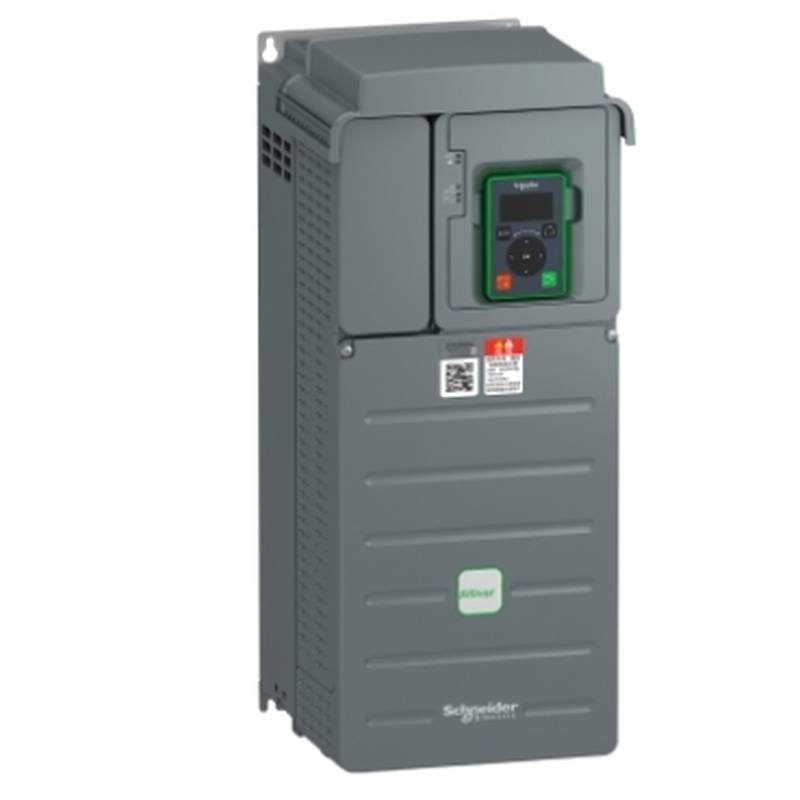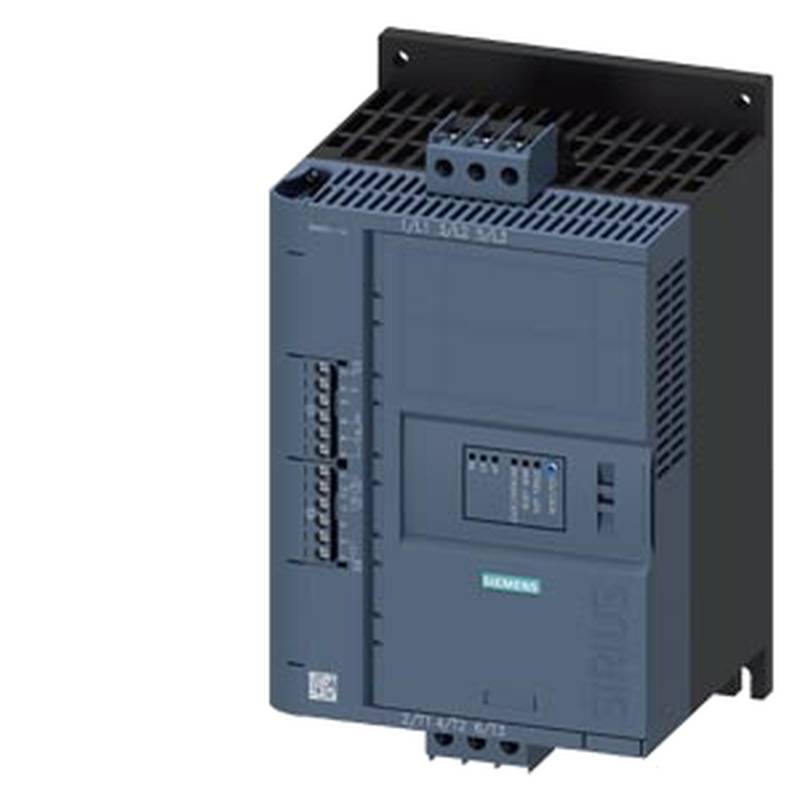
The Siemens 5SN6610-7CN Type D Miniature Circuit Breaker 3P+N 10A is a robust and reliable protective device engineered for demanding industrial environments. This 3-pole plus neutral (3P+N) breaker offers superior overcurrent and short-circuit protection, essential for safeguarding sensitive electrical equipment and ensuring operational continuity. Its Type D tripping characteristic makes it particularly adept at handling high inrush currents common in inductive loads, such as motors and transformers. The 10A rating is ideal for circuits requiring precise current management.
Product Specifications
| Feature | Specification |
| :------------------- | :------------------------------------------ |
| Manufacturer | Siemens |
| Product Series | 5SN6 |
| Product Type | Miniature Circuit Breaker (MCB) |
| Pole Configuration | 3P+N (3 Poles + Neutral) |
| Current Rating | 10A |
| Tripping Characteristic | Type D |
| Rated Voltage | 400/415V AC |
| Breaking Capacity | 6kA |
| Frequency | 50/60 Hz |
| Protection Class | IP20 (enclosure), IP40 (with cover) |
| Mounting Type | DIN Rail (35mm) |
| Compliance Standards | IEC/EN 60898-1, IEC/EN 60947-2 |
| Operating Temperature| -25°C to +55°C |
| Connection Type | Screw Terminals |
Core Features & Market Positioning
The Siemens 5SN6610-7CN stands out in the industrial MCB market due to its robust construction and specialized Type D curve. This characteristic is paramount for applications where equipment startup causes significant, transient current spikes, such as motor-driven machinery or large lighting banks. Unlike Type B or C breakers, the Type D curve tolerates these high inrush currents, preventing nuisance tripping while still providing essential protection against dangerous short circuits. This makes the 5SN6610-7CN a preferred choice for sectors like manufacturing, heavy industry, and building automation where machinery reliability is critical. Its IEC and EN certifications further underscore its compliance with stringent international safety and performance standards, solidifying its position as a dependable component in professional electrical installations.
Key Application Scenarios
This Siemens 5SN6610-7CN Type D MCB is ideally suited for protecting circuits with high inductive loads. Common scenarios include motor control circuits for pumps, fans, and conveyors, where starting currents can be 5 to 20 times the rated current. It is also highly effective in protecting transformer-fed circuits and equipment such as welding machines or fluorescent lighting ballast systems, all of which exhibit substantial inrush currents. In industrial power distribution panels and sub-distribution boards, this 3P+N breaker ensures reliable and safe operation of machinery and equipment, preventing unnecessary downtime and protecting sensitive electrical components from damage due to overloads or short circuits.
Practical System Integration Guidance
Integrating the Siemens 5SN6610-7CN is a straightforward process due to its standard DIN rail mounting. Ensure the main power supply is de-energized before installation. Connect the line conductors to the designated input terminals and the neutral conductor to the neutral terminal. For 3P+N configurations, all three phases and the neutral must be correctly terminated to ensure proper operation and protection. Secure the breaker firmly onto the 35mm DIN rail. Verify all connections are tight and insulated before re-energizing the circuit. Adherence to local electrical codes and best practices for wiring and termination is essential for a safe and compliant installation.
Operation and Risk Mitigation
The Siemens 5SN6610-7CN operates by monitoring the current flow through its internal mechanism. When the current exceeds a predetermined threshold for an extended period (overload) or instantaneously spikes to a dangerously high level (short circuit), the breaker trips, interrupting the circuit and preventing damage. The Type D curve allows for higher inrush currents before tripping, typically between 10 to 20 times the rated current. To mitigate risks, always ensure the breaker is correctly rated for the connected load and that the ambient temperature is within the specified operating range. Regularly inspect terminals for signs of overheating or loose connections. Proper labeling of circuits protected by this breaker is crucial for accurate troubleshooting and maintenance.
Scalability & Long-Term Value
While the Siemens 5SN6610-7CN is a specific-rated MCB, its value extends through its compatibility with broader Siemens industrial electrical systems. It integrates seamlessly with other Siemens components within the 5SN series and broader circuit protection portfolios, allowing for standardized installations. For future upgrades or expansions, the modular design of DIN rail mounted devices permits easy replacement or addition of protection devices. This breaker's robust build quality and adherence to international standards ensure a long operational lifespan, minimizing the need for premature replacement and contributing to the overall long-term economic viability of the electrical installation. Its presence ensures a foundational level of protection that can be built upon as system requirements evolve.
Frequently Asked Questions
1. What is the primary function of a Siemens 5SN6610-7CN Type D MCB?
This breaker primarily protects electrical circuits from overcurrent and short-circuit faults. It is specifically designed for applications with high inductive inrush currents.
Its Type D tripping characteristic allows for higher surge currents during equipment startup. This prevents nuisance tripping while ensuring robust protection.
The 3P+N configuration provides protection for three phases and the neutral conductor simultaneously. This is common in industrial three-phase systems.
2. Where is the Siemens 5SN6610-7CN Type D 10A breaker most commonly installed?
It is ideal for circuits powering motors, transformers, and large lighting systems. These loads often experience significant starting current surges.
Industrial environments such as manufacturing plants, workshops, and heavy machinery operations benefit greatly. Its Type D curve is crucial for reliable operation in these settings.
Building automation systems and control panels requiring protection for equipment with high transient current demands are also key applications.
3. What are the key technical advantages of the Type D tripping characteristic?
Type D breakers are engineered to tolerate very high inrush currents, typically 10 to 20 times the rated current. This is essential for inductive loads.
This characteristic prevents premature tripping during the normal startup of machinery like motors or transformers. It ensures operational continuity without compromising safety.
It offers a critical balance between accommodating transient surges and providing rapid protection against dangerous short circuits.
4. How does the 3P+N configuration benefit an electrical system?
The 3P+N setup ensures that all three live conductors and the neutral are protected by a single unit. This simplifies installation and wiring in three-phase systems.
It provides comprehensive overcurrent and short-circuit protection across all supplied phases. This is vital for balanced and safe operation of three-phase equipment.
The integrated neutral pole offers enhanced safety and fault detection capabilities compared to separate pole protection.
5. What is the breaking capacity of the Siemens 5SN6610-7CN?
The Siemens 5SN6610-7CN has a breaking capacity of 6kA. This indicates its ability to safely interrupt fault currents up to 6000 amperes.
This breaking capacity is suitable for many standard industrial and commercial electrical distribution systems. It ensures protection against severe short-circuit events.
It's crucial to ensure the overall system's prospective fault current does not exceed this 6kA rating for optimal safety.
6. Can this MCB be used in residential applications?
While technically possible, Type D breakers are generally overkill for typical residential loads. Residential circuits usually employ Type B or C breakers.
The high inrush tolerance of Type D is usually not required for standard home appliances and lighting. Using it might be less cost-effective.
However, for specific residential setups with motor-driven equipment, a Type D might be considered if other options prove inadequate.
7. What are the environmental operating conditions for this Siemens MCB?
This breaker is designed to operate reliably within an ambient temperature range of -25°C to +55°C. This covers a wide spectrum of industrial environments.
It is important to ensure adequate ventilation around the breaker to prevent overheating and maintain performance within this range.
The IP20 enclosure rating means it protects against solid objects greater than 12.5mm but is not protected against water ingress.
8. What standards does the Siemens 5SN6610-7CN comply with?
This miniature circuit breaker complies with international standards IEC/EN 60898-1 and IEC/EN 60947-2. These are key safety and performance benchmarks.
Compliance with IEC/EN 60898-1 ensures suitability for general purpose overload and short-circuit protection in AC installations.
IEC/EN 60947-2 specifies requirements for low-voltage switchgear and controlgear, further validating its industrial robustness.
9. How do I properly install the Siemens 5SN6610-7CN?
Ensure the power supply is completely de-energized before beginning installation. Mount the breaker securely onto a standard 35mm DIN rail.
Connect the incoming line conductors to the top terminals and the outgoing load conductors to the bottom terminals. Ensure the neutral conductor is connected to its designated terminal.
Verify all connections are tight, properly insulated, and comply with relevant electrical codes before restoring power.
10. What is the significance of the 10A current rating?
The 10A rating indicates the maximum continuous current the breaker can safely carry without tripping. It defines the circuit's current carrying capacity.
This rating is crucial for matching the breaker to the specific load requirements. It ensures the circuit is protected against overloads at this specified current level.
Selecting the correct amperage rating is vital for both protecting equipment and preventing electrical hazards.
























